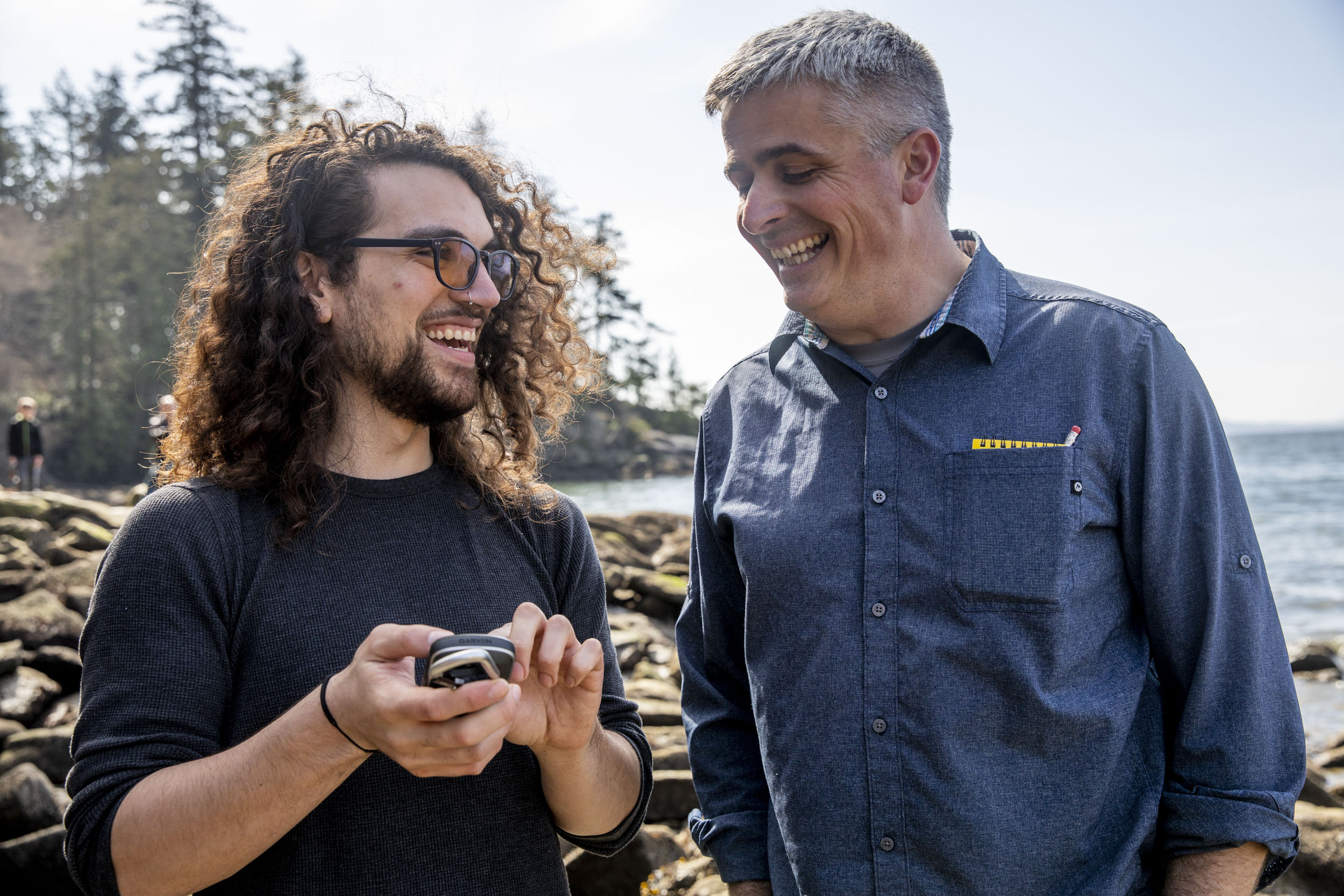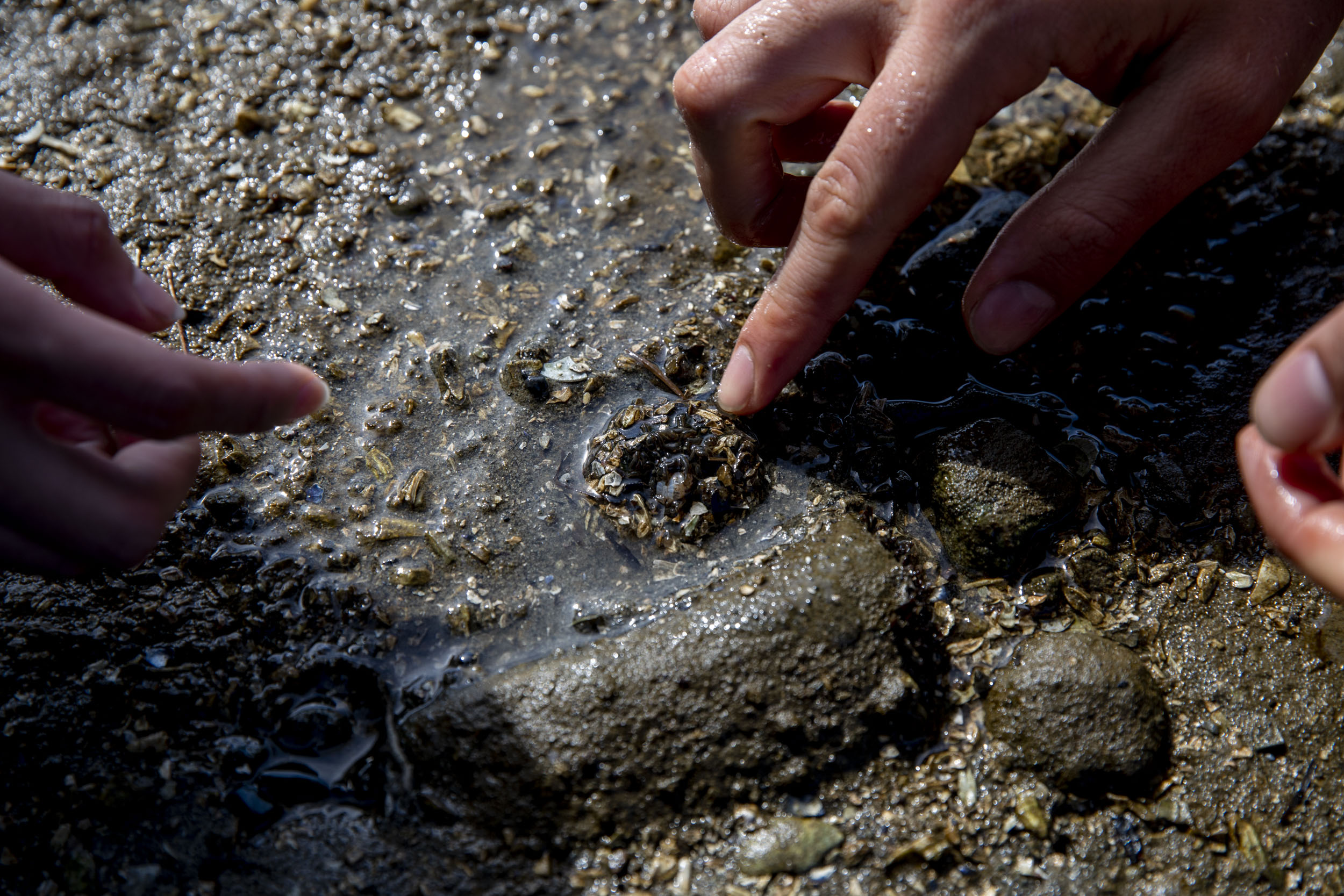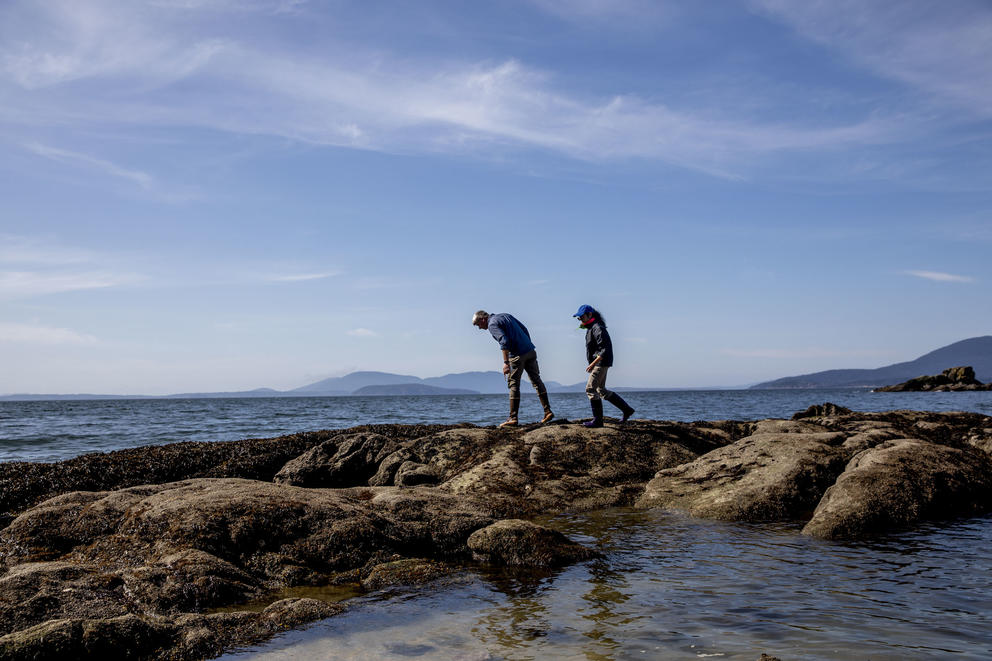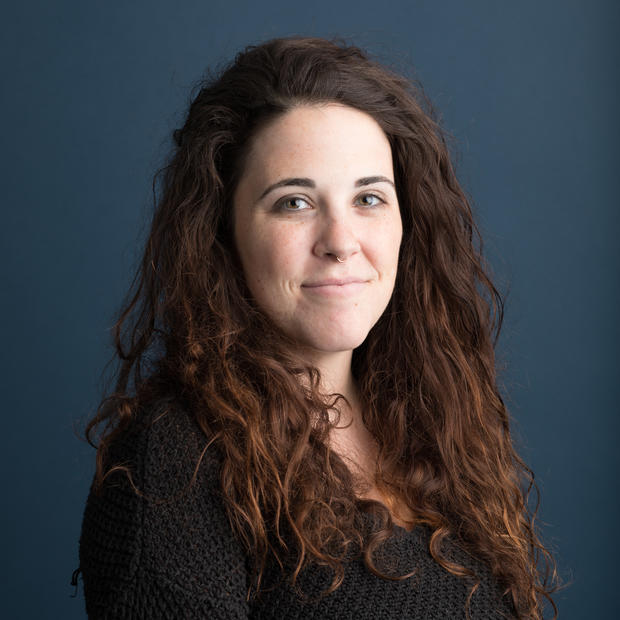This interview has been lightly edited for clarity.
I grew up in Yakima, Washington. [But] my great-grandfather purchased a small piece of land on the Hood Canal and had a cabin there many years ago. It probably fell down in the ’60s. We would go there every summer and camp out, so that was my window into the marine world.
My dad's family grew up over in Copalis Crossing, Pacific Beach — north of Ocean Shores and south of Taholah. My grandfather grew up on the beach digging razor clams in that area. We would go out there every year for Easter, which is the first good low tide of the year, and we'd go razor clam digging. My grandfather, as well, was an avid fisher, so through him I got engaged in a lot of that as well.
My family's part of the old school of clam diggers. We have very strong opinions on the type of shovel you're supposed to use and that clam tubes are only for tourists. There are some strong opinions on the right way of doing it.
Leaving Yakima, I was accepted and enrolled in Western Washington University. My first year there, I flunked out of college. I just wasn't really ready to dedicate what it takes to succeed in higher education.
From there, I finished up at Whatcom Community College, and I worked in food service. I managed a reasonably large catering department at a downtown hotel. I worked at the Seattle Yacht Club.
I looked around at a lot of folks in [the food service] industry and I just couldn't see myself in them. What it takes to rise up in that industry, to be a food and beverage manager or director, wasn't the lifestyle that I really wanted. But I felt stuck because I was young — I was directing the catering department and had staff, so I was torn on what to do next.
When I was at that inflection point, my tribe, the Samish Indian Nation, sent out letters to all its members saying that they were starting an internship program. It was called the Samish Stewards Program, and the department that ran it was the Center for the Study of Coast Salish Environments. It was funded by the Samish Tribe. The person they hired to direct it, Russel Barsh, was looking for Samish students to come out, spend all summer out in the [San Juan Islands] doing a bunch of different types of research projects, living on little islands, getting those folks out there getting engaged in culture. In exchange, there was a stipend to help offset the cost of college.
Marco Hatch, assistant professor of environmental science at Western Washington University, and environmental science junior Celida Moran collect data along the coast of Larrabee State Park in Bellingham on March 21, 2019. Hatch is a marine ecologist and a member of the Samish Indian Nation. He works to help his students, often Native American and Latino, get more opportunities in STEM fields. (All photos by Dorothy Edwards/Crosscut)
I was in a place, thinking: “I don’t know what I want, but I know I’m not in the right spot.” I met with Russel. It was kind of a big leap to that, [and the program] gave me the motivation and direction to go back to school.
I went ahead and quit my catering job and [after a summer with the Samish Stewards Program] enrolled at the University of Washington. From there, I got into the School of Aquatic and Fishery Sciences. Between that experience and the experience working for the tribe, living out in the San Juan Islands, going to all these different places that most folks don't get to go, I really developed a cultural connection and a different view of the environment.

When you're in that area, it's extraordinarily beautiful. It's breathtaking. And the next word people normally use is “pristine.” The San Juans appear to be pristine, a pristine gem. While they're a gem, they're certainly not pristine. In particular, areas that are state parks or reserves are still not pristine because they no longer have the land management and ocean management that Coastal Salish people have been doing in this area for thousands of years.
Because [Salish people] are not out on the land managing them anymore, the forest has completely changed. There are some obvious examples. When you're out in these areas that are touted as being pristine, they're in fact completely different than they were a few hundred years ago. They've gone from being these open grassland landscapes with a few big trees to being more or less monocultures of Doug fir because burning's not happening. Garry oak forests aren't being managed. There's this whole suite of terrestrial management that's been lost or is not being practiced to the extent it was.
What I wound up doing for my graduate work was driven from that experience. These environments have changed, but how do we know what they looked like and how they've changed? Can you find an environmental recorder that's out there?
It turns out bivalves can be pretty good for that. One of the species I studied actually has daily growth increments, so you can reconstruct the daily growth from this little tiny clam. I worked on using the chemistry within a shell to tell you about the oceanography at that time, so you could look at a shell that was 3,000 years old and figure out what the temperature was and what the nutrients looked like.
Leaving graduate school, I was going through that "I don't know what's next" phase. I get an email. I don't even know who forwarded it to me, but I get an email about a program called Student to Academic Professoriate for American Indians. The intention of this fellowship was to take recently graduated Native American students at the master's or Ph.D. level and place them at a tribal college or university to help them transition into being faculty at tribal colleges. I saw this come through and it was due the next day, so I stayed up all night and finished the application and sent it in.
That brought me up to Northwest Indian College. The main campus for it is on the Lummi Reservation, just outside Bellingham. As the only tribal college in the Northwest, they also have a number of site campuses on different reservations around the Salish Sea and the Nez Perce Reservation in Idaho. I wound up getting hired to direct the new program they created called the Salish Sea Research Center.
When I got there, my former boss really challenged me to think of questions that are interesting to Native students. That's what had engaged me into science, but I'd spent the past six years at a very prestigious research institution where it's more about intellectual pursuit and less about pursuit that's important to people on the ground.

I was told at the University of Washington that the ocean's just so vast that indigenous people couldn't have impacted it. But then you have these structures, clam gardens, that are these monumental rock features that create and alter beaches, create new habitat. They are these massive engineering projects that were done from here all the way to southeast Alaska.
Some of them date back to 3,500 years before present. Many of them are probably older than that. They have created these structures for thousands of years to effectively alter the environment to increase food productivity.
Here's this really cool example of indigenous management that a lot of people have forgotten about. Can we work to better understand these systems and how they functioned? As an ecologist I'm interested in these questions — we observe more clams and faster growing clams in these beaches, but why is that?
Get the best stories of the week
This weekly newsletter dives deeper into one story and how it was reported, along with curating the best stories of the week.
As a member of the Samish Nation, I'm interested in how can we help get communities back out on these beaches. How can we get youth out there? How can we reactivate these structures not only for clam production but also as really important teaching and learning environments? Environments where elders can work with youth and manage the beaches, maintain the rock wall, till the beaches, where we can go out and practice traditional management and restore the environment back to the way that it was 500 years ago. So both of my interests have aligned around clam gardens.
I now work at Western Washington University. Three years ago I moved from Northwest Indian College to Western Washington University on a joint project.
There's a high degree of student involvement in my work. I see that as one of the big outcomes of these projects — we're doing something important, but also, these students are having a transformative experience. For many, it’s their first experience in science and many wouldn't be engaged in science if it were not for a lab like mine.
The Samish Stewards Program was the first time I'd been in a group like that, where I had been really exposed to culture and been around a lot of other Coastal Salish people. I think that conversations about traditional knowledge are definitely evolving — the knowledge gained over multiple generations of working with the land, being on the land, managing ecosystems, being part of the ecosystems has value. I think that that's been acknowledged for a long time, but I think we're starting to see that put into action more, the clam gardens being an example of that, terrestrial burning being an example of that.
Most of the mainstream won't accept [indigenous knowledge] unless it has the Western science to also back it up. But the more and more that we show its importance, hopefully the less we'll be reliant on having Western science to prove what indigenous knowledge is telling us. Why wouldn't I want to listen from and learn and share with people who have multiple generations of experience in that landscape compared to your classically trained scientist, who might visit those environments for a week a year to make their measurements, and then proclaim that they know everything about the environment?








